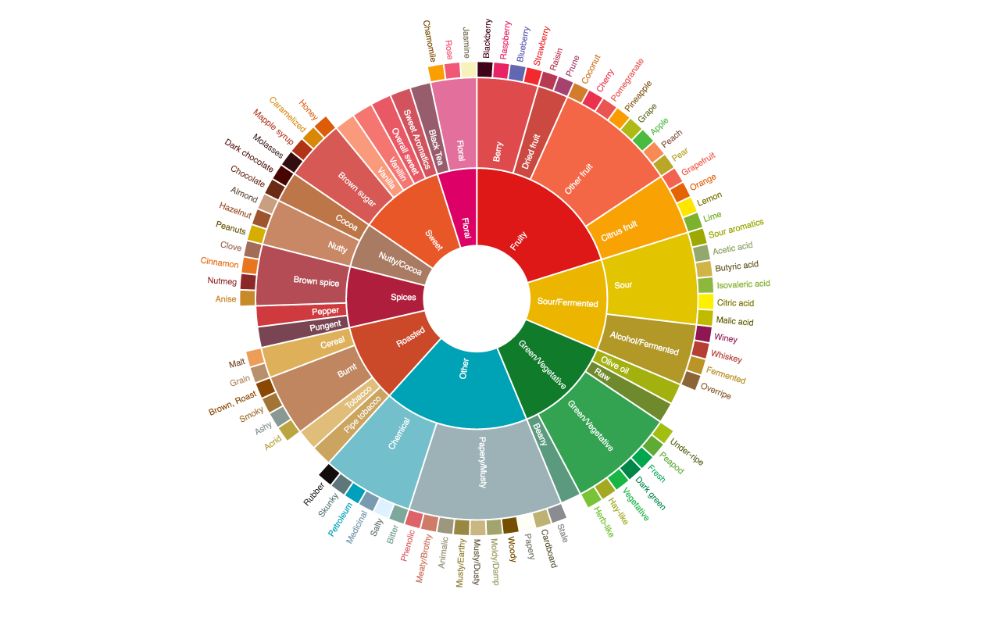
Why Does Coffee Taste Like Chocolate, Berries, Honey etc.?
Why Does Coffee Taste Like Chocolate, Berries, or Honey?
If you’ve ever taken a sip of coffee and thought, “Wow, this tastes like chocolate… or is that honey?” — you’re not alone.
Coffee is a complex natural product with hundreds of aromatic compounds, each contributing to its unique flavor. At Wonderbean, we find that fascinating — because behind every note of caramel, berry, or cocoa, there’s real chemistry at work.
🌱 It All Starts at the Origin
Just like grapes in winemaking, coffee beans take on the character of the land they grow in.
Altitude, soil minerals, rainfall, and temperature all shape the bean’s natural chemical composition.
-
High-elevation coffees, like those from Chikkamagaluru, Karnataka, grow slowly in cool climates, allowing sugars and acids to develop gradually. This often results in sweeter, more complex flavors — such as caramel, chocolate, or stone fruit.
-
Lower-altitude beans tend to have earthier, nuttier notes due to faster ripening and lower acidity.
🍒 Processing Adds Another Layer
Once the coffee cherries are picked, the way they’re processed directly affects flavor:
-
Washed coffees (where the fruit is removed before drying) taste clean, bright, and crisp — often highlighting honey or citrus notes.
-
Natural/sun-dried coffees retain the fruit during drying, allowing sugars to infuse into the bean — giving berry, wine, or jam-like sweetness.
-
Honey-processed coffees leave some fruit mucilage on the bean, balancing clarity with syrupy sweetness.
At Wonderbean, we focus on washed and sun-dried processes, as they bring balance and transparency to the cup — letting the bean’s origin speak clearly.
🔥 The Art & Chemistry of Roasting
When green coffee is roasted, it undergoes a series of complex chemical reactions that create new flavor and aroma compounds.
The two key reactions are:
-
The Maillard Reaction — This is the same process that browns bread or sears meat. It occurs when amino acids and sugars in the bean react at high temperatures, producing hundreds of new aromatic molecules.
-
This reaction gives coffee its toasty, nutty, and chocolate-like notes.
-
-
Caramelization — When natural sugars break down under heat, they form caramel-like flavors that add sweetness and body.
Together, these reactions build coffee’s flavor depth — from roasted nuts to cocoa, to smooth caramel.
At Wonderbean, our medium-dark roasts (like Malnad Roast and Highland Gold) are designed to balance both: sweetness and complexity without burning away the bean’s natural nuances.
🔬 The Science Behind the Flavors
Here’s where things get really interesting — coffee has over 800 aromatic compounds, more than most wines or teas. These tiny molecules interact with your senses of taste and smell to create a wide spectrum of perceived flavors.
Some of the key compounds include:
-
Furans → give caramel, sweet, and baked notes (formed during roasting).
-
Pyrazines → contribute to roasted, nutty, and chocolate aromas.
-
Esters → create fruity, berry, and floral scents (often linked to fermentation).
-
Phenols → add smoky, spicy, or woody tones.
-
Aldehydes and Ketones → bring buttery, sweet, or honey-like smoothness.
When you sip coffee, aroma plays a bigger role than taste — in fact, nearly 80% of flavor perception comes from your sense of smell. The moment coffee hits your tongue, these compounds travel to your nose through retronasal pathways, and your brain connects them to familiar memories — like chocolate, berries, or honey.
That’s why two people might describe the same coffee differently — our brains interpret these complex aromas through our own sensory experiences.
